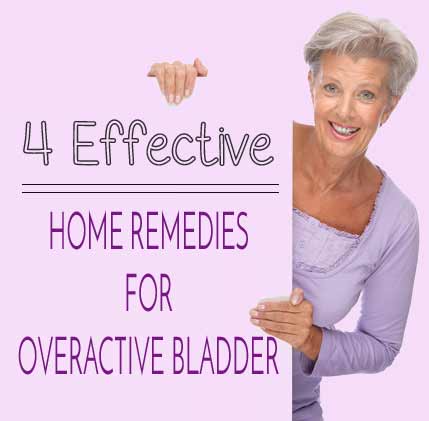Can you still get ovarian cysts after hysterectomy?
Is it possible to get ovarian cysts after hysterectomy? Ovarian cysts are a common gynecological problem in women that can occur before but also after a hysterectomy.
This blog is reader-supported. When you buy through a link on our site, we earn a commission at no extra cost to you. Read more

But the question is: if they leave the ovaries during a hysterectomy, does this increase a woman’s risk of getting ovarian cysts? We will look at some of the treatment options for ovarian cysts and the symptoms they may produce.
How can ovarian cysts form after hysterectomy?
Ovarian cysts occur in the ovaries, and there are many types of these cysts, including functional cysts, which are not necessarily harmful to your health. Hysterectomy, on the other hand, entails the removal of the problematic uterus and other reproductive organs depending on the indication for this surgery. Removing the uterus will compromise blood flow to the ovaries, which can result in dysfunctional ovaries and, thus, the formation of ovarian cysts.
Furthermore, taking some hormonal supplements before the hysterectomy could have stopped the ovulation and hindered cysts’ formation. Immediately after the surgery, the cysts could form again due to stopping the hormonal treatment you have taken before the procedure. However, these are not necessarily harmful cysts but are functional cysts. Endometriosis cysts can, however, return after the removal of the uterus if the reason for the hysterectomy was endometriosis.
Therefore, the answer is yes; you can still get ovarian cysts after hysterectomy. Only if they remove the ovaries (oophorectomy), a woman will not have to worry anymore about getting ovarian cysts after the surgery.
How common are ovarian cysts after hysterectomy?
Ovarian cysts are common in premenopausal and postmenopausal women. The sad part is that they do not always notice cysts until the woman undergoes a routine pelvic examination, where the doctor realizes a fluid-filled sac in the ovaries.
The early symptoms are not obvious for these cysts unless they rupture, grow very big, bleed abnormally, or cause recurring pain. However, the symptoms can be confusing if you have had a hysterectomy because other conditions may provoke similar symptoms.
What are the signs of ovarian cysts after hysterectomy?
As has been noted, the symptoms of ovarian cysts are not obvious unless the cysts twist, rupture, or bleed because of their large size. It is often during pelvic examinations that they diagnose ovarian cysts, and the doctor will normally give a patient a “wait and see” approach for the cysts to subside in a few weeks. Then, a routine observation will follow to witness the decreasing size of the cysts.
If they do not decrease in size, then it is obvious that they will not go away, so the woman must get an alternative treatment. The earlier they are discovered, the less invasive treatment is required.
Ovarian cyst signs and symptoms
If ovarian cysts have grown big, they will show symptoms such as the following:
- Weight gain
- Bloating
- Abnormal bleeding
- Lower back pain
- Painful menstruation
- Pelvic pain
- Abdominal pain, which signals a ruptured cyst
- Pressure at and heaviness of the ovaries
- Nausea
- Painful sexual intercourse
Once you suffer from these symptoms after your hysterectomy, consult the doctor urgently. A small percentage of cysts can become cancerous and thus life-threatening.
The presence of cysts in the ovary can weigh you down and affect your movement because the cysts collect fluid. Their increased size puts pressure on the surrounding organs, which may cause pain in the lower abdomen and during intercourse. A ruptured ovarian cyst can release fluid into the cavity of the abdomen and thus result in sharp pain.
Types of ovarian cysts
There are different types of ovarian cysts; each requires appropriate treatment. Functional ovarian cysts arise as a part of the ovulation and menstrual cycle, and pathological cysts evolve from abnormal cell growth. However, functional cysts are the most common type.
Pathological ovarian cysts that may develop after a hysterectomy include:
- Cystadenomas. These grow on the outer surface of the ovary and contain a watery fluid or mucus. They can grow very large, up to 30 cm in size. They are often benign, but a small percentage can become cancerous. These are known as cystadenocarcinomas and are the most common type of ovarian cancer.
- Dermoid cysts. Also, go by the name of teratomas. They can form at any age but are most common in the childbearing age. This cyst originates from a totipotential germ cell in the ovaries and can contain tissue, such as hair, skin, bone, nails, or teeth. They’re rarely cancerous, but because they can cause twisting (torsion), rupture, and an ovary infection, they need to be surgically removed.
- Endometriomas. Endometrial tissue growing deep within the ovary can result in a cyst. Because they are frequently filled with a tar-like, red-brown substance, they are also known as chocolate cysts. Women with endometriosis have a 20-40% risk of developing endometriomas.
 Dermoid ovarian cyst, ~60 cm circumference.
Dermoid ovarian cyst, ~60 cm circumference.
Ovarian torsion
The presence of large Dermoid cysts or cystadenomas heightens the risk of ovarian torsion. Because of the ovary’s extra weight may start to twist around the ligaments that normally keep it in place. This may cause sudden, severe lower abdominal pain. Ovarian torsion may stop the blood supply to the ovary, and consequently, the ovary will die.
Can ovarian cysts cause bleeding after hysterectomy?
Ovarian cysts can cause heavy and irregular bleeding during periods. However, once they remove the uterus, a cuff is formed, and the top of the vagina is closed. This means any blood loss from the ovaries will not end up in the vagina. After a hysterectomy, you may experience irregular bleeding, which could be caused by other health conditions. Click here to see other causes of vaginal bleeding after hysterectomy.
Treatment for ovarian cysts after hysterectomy
The treatment of ovarian cysts that develop after a hysterectomy depends on the size and the type of cysts. Smaller cysts that cause no symptoms or bleed are usually left to dissolve in a few weeks. Large cysts that can rupture or bleed often require surgical removal. Ask your doctor about the options to treat your cysts. The pain that large cysts inflict can be hard to endure for long since many doctors leave the cysts to subside for weeks.
Regular check-ups are imperative to prevent the rupture of the ovarian cyst. The rupture of an ovarian cyst can cause great discomfort and pain and sometimes be life-threatening (peritonitis) when the cyst contents enter the abdominal cavity.
All things considered
Ovarian cysts are a common gynecological problem that many women experience at any age. There is no clear indication if hysterectomy can cause or aggravate existing ovarian cysts because the surgery only removes the uterus. Still, a probable explanation is that the ovaries start to malfunction, causing a hormonal imbalance that then prompts cysts’ formation.
Even though most ovarian cysts are not cancerous, there is more chance of malignancy as you age, and particularly after menopause, this risk greatly increases. Preventive check-ups after hysterectomy may catch potential health problems like ovarian cysts and cancer in their early stages.
Latest from the blog:
- Managing Hysterectomy Scar Tissue: 10 Techniques and Treatments
- A Healthy Post Hysterectomy Diet Plan – The Ultimate Guide
- Essential Advice for Husbands After a Hysterectomy – Practical Tips For Emotional Support
- Trouble sleeping after hysterectomy – 10 Tips for Managing Sleep Issues
- How to do pelvic floor exercises after hysterectomy?
Sources:
Medicinenet.com: Ovarian Cysts: Symptoms, Causes, Types, and Treatment
Hysterectomy.org: Everything You Should Know about the Super-Common Ovarian Cyst
Ovarian Failure







